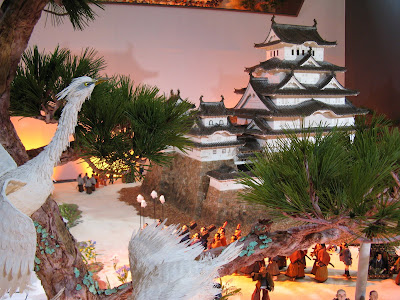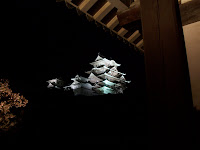Yesterday we took Matt & Em on a 'pilgrimage' (by local bus, 'ropeway' - cable-car - and walking to see Engyoji. This temple-complex was founded more than a thousand years ago by Shoku, a Buddhist priest, in the middle of a sugi forest. Today its main claim to fame amongst westerners seems to be that it was the set for 'The Last Samurai.'
Photo 1: Sun penetrating the sugi highlights what I believe are Boddhisattva jizo, hundreds of statues of the incarnation of Buddha who protects children and the souls of children who have died. Please correct me if I'm wrong!
Photo 2: Jikido. This is the back of the great wooden hall which was constructed in 1174, left unfinished for hundreds of years, dismantled and finally reconstructed in 1963. It's nestled in a forest of momiji, Japanese Maples. I'd love to see it in autumn...
Photo 3: Dad and two kids ring the giant Bell of Mercy.
Photo 4: Maniden. The huge main building was originally constructed in CE 970, dedicated to Kannon. It was totally destroyed by fire in 1921 and rebuilt by 1932.
Photo 5: Detail of the beads placed in one of the many hands of Kannon, the Goddess of Mercy who appears in so many forms throughout Asia, including male and female and having anywhere from 4 to 1000 arms.















































